In the bustling landscape of late twentieth-century business, we find Tony Hsieh at a critical point in time. We don’t find him in the quiet halls of a university but in the dynamic world where ambition meets opportunity. Let’s begin our narrative with Hsieh at a specific moment, a crossroads where his burning passion for leadership begins to grow. He has just sold his first company to Microsoft for 265 million dollars, and now his journey toward transforming Zappos into one of the most unique and successful organizations in the world has begun. The headquarters is about to move to one of the most iconic cities in the world, Las Vegas, and Hsieh has big plans for his company. Hsieh’s transformation from the tech industry of LinkExchange to the visionary leadership at Zappos created a unique shift in organizational culture. His number one goal is to satisfy customers through employee happiness. From his first experiences, and driven by a constant passion for leadership, Hsieh’s decision to introduce holacracy at Zappos would change the way we look at business organizational structures. Hsieh’s full commitment to employee centralization, and smart decisions, he not only skyrocketed Zappo’s revenue, but also built a new view of the business approach to organizational culture, leaving a legacy on the landscape of modern workplaces.1
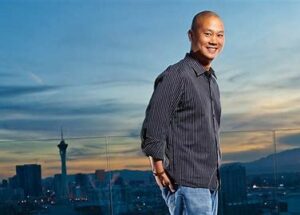
The deal with the biggest tech company in the world was now secured, and the young Hsieh and his roommate, Sanjay Madan, had just sold their company to Microsoft for 265 million dollars. To get a better understanding of this big moment in his life, we will turn our focus back three years, to Harvard University, which was the starting point for Hsieh’s successful life as an entrepreneur. Just after graduating in 1995, Hsieh and Madan sought to use their fresh knowledge gained from their studies at the university. Hsieh decided to found a company with his roommate, which they gave the name “LinkExchange.” By completing his computer science degree combined with his drive, the transformation from university to business was not an issue at first. LinkExchange provided advertising space for customers on their website, gaining rapid traction, making them reach almost half of the internet users worldwide.2 The startup of LinkExchange was not a fairytale from beginning to end. Hsieh and Madan were challenged early on with cash flow issues that posed a significant threat to the company’s survival. During this time, Hsieh’s strategic thinking and resilience was tested, which would later sharpen his leadership style and organizational approach. Thanks to his commitment to the company and his clever decision-making, he managed to push LinkExchange back on track to be profitable again. This was the real takeoff for his professional career, and it was also where he learned important lessons about facing challenges and making smart decisions. The two did face challenges, but later Microsoft recognized the potential of LinkExchange. In 1999, only three years after starting the company, Hsieh and Madan decided to sell the company to Microsoft. The freshly graduated Hsieh showed that he was able to start a company and turn it around when it faced great challenges, demonstrating his professionalism in business while also leaving a big impact on the technological world behind him.3

Hsieh’s early interest in how customer satisfaction and employee happiness correlate will have a great impact on the organization that would later change the business world. He will come to create a revolutionary approach in how to build a successful organization that would maximize the customer’s experience. This stems from the reasons behind his decision to sell LinkExchange; the company experienced rapid growth, reflected in the increasing number of employees. According to Hsieh, the fast growth in employees had a negative impact on the organizational culture. Therefore, Hsieh decided to make a strategic exit, and instead, he started investing and advising for Zappos, which is a company selling shoes online. After a while, as an investor and advisor, Hsieh got the position of CEO for Zappos, which at the time was a small company with 1.6 million dollars in sales (2000). This would be a pivotal decision in his career, and his burning passion for customer satisfaction through organizational structure had just begun. He started various experiments to create a workplace that was creative and beneficial for employees, because his theory was that happy employees would affect how they handled customers. If the employees had a higher drive to succeed and felt important in the business, they would handle the customers with a positive attitude and would always work for a solution. Coming from a small company, he valued an intimate and informal structure where employees could get work done, yet at the same time have fun. His main vision was to get away from the old-school business structure with high power distances, and instead be pioneers in building a creative and unique workplace with the employees in power. It would be like working in a democracy instead of a dictatorship; the ideas would now come from the employees, which would make them feel more important to the company. In 2010, Hsieh released his book Delivering Happiness, which aimed to describe his philosophy on customer service.4
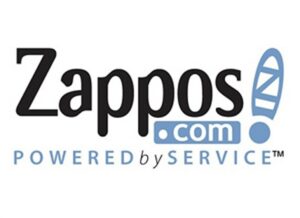
At the time Hsieh became CEO, Zappos headquarters was located in San Francisco, California. That was the same city he founded LinkExchange. However, Hsieh made the decision that relocating to a suburb outside Las Vegas would be advantageous, and with this move, he initiated his “Downtown Project” in Las Vegas. Moving the entire firm to Las Vegas with all employees may sound bold, and it was. As always, Hsieh had an idea behind his acting, and his plan was not only to create a great workplace for the employees in Zappos but furthermore, to create a unique area with lots of ideas shared between companies. To advance his Downtown Project, he allocated $350 million to develop a new district within the city, intended to become Las Vegas’s commercial hub. Hsieh described the imaginary vision culture as “fun and a little weirdness.” He aimed to cultivate a unique and exciting atmosphere. His vision was to create “a vibrant area where Zappos employees would live,” not only providing a good office that they enjoyed going to, but also providing their families with a safe and fun home. This area became very popular and grew bigger than Hsieh had first planned. Many entrepreneurs and people from the tech workforce came to live here. This project resulted in rapid economic growth for Zappos. With the company’s move to Las Vegas, the sales skyrocketed, and they kept growing bigger. They were now starting to be recognized by the public. Tony Hsieh was becoming a well-known name after increasing Zappos’ revenue from 1.6 million in 2000, to passing the 1 billion target in 2009. He not only created a new revolutionary physical city, but an area for individuals to have the space and freedom to think. The governor of Nevada at the time, Steve Sisolak, expressed his gratitude on Twitter by saying, “Tony Hsieh played a pivotal role in helping transform Downtown Las Vegas.” This is a good example of how Hsieh reached a broader target than just his own employees. His first step in transforming Zappos into one of the most special companies in the world was taken, and now it was time for the organizational shift.5
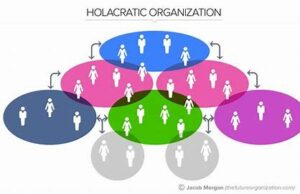
In 2014, to reach his vision of creating the ultimate corporate culture, Hsieh gave his employees at Zappos a choice: either commit to the new holacracy structure, or leave the company. Holacracy is a structure that emphasizes a decentralized organization: no job titles, no managers, and no hierarchy. The founder of the holacracy idea is Brian J. Robertson, and his theory was that “many founders don’t want employees following their orders. They want a team of leaders stepping up and taking a piece of this organization with autonomy and self-direction.”6 Robertson argues that with a decentralized power, you will give more responsibility to employee teams working together, rather than putting all pressure on one manager or boss. This distributed the responsibility while also increasing the output of ideas and productivity. It is a special approach in how to manage an organization, which makes many employees anxious. When Hsieh announced that they were implementing the holacracy structure, roughly 18% of the employees chose to leave the company. For being a fast-growing company, one might think that this would be a huge problem, but that was not how Hsieh viewed it. He did not worry about the high percentage of exits; rather, he thought this provided Zappos with employees who were fully committed to the idea of what he was trying to achieve, which would help the company in the long run. Hsieh had now created both a physical space where the employees could enjoy living and an organization that had the burning desire to lift the company to further success. Through the complete satisfaction of employees, the customer return rate went up, which was Hsieh’s number one goal from the start.7
His radical organizational structure was now being closely watched by other companies. He had created a workplace where employees were heard and felt freedom in their work. Hsieh’s goal was to make employees feel important and involved, and who would love going to work. To achieve this, he worked through different approaches, but one of the most effective ones was the architectural structure of the office. The idea of the “city hall” was to build an open landscape office where all employees felt like a part of the team. With Hsieh’s new structure, the impact it has had on the company was evident. Since he became CEO, Zappos had grown into one of the biggest online stores for shoes. He had created an organizational culture within the company that is something the business world had never seen. With a workplace where the employees now had the power, working without titles, they were more productive than any other year. The structure of the offices and the happiness of employees had made productivity reach its highest ever in the history of the company. 2009 was the year Zappos surpassed 1 billion dollars in revenue, and later that year, in July, Hsieh sold Zappos to Amazon for 1.6 billion dollars. The reason for the sale came right after Hsieh met the chairman of Amazon in Seattle, Jeff Bezos. Hsieh was impressed by all the similarities the two companies had and thought it would be smart to sell.8
With the sale of the company, Hsieh still wanted to keep the culture he had built up during his years as CEO and was able to keep the power of the company. Amazon was now the mother corporation, while Zappos kept running as its own business.9
On November 18, 2020, not only was Zappos in shock, but the entire business world held their breath—news broke that Tony Hsieh had been seriously injured in a fire. Just twelve days later, this successful and young entrepreneur was pronounced dead at age 46. He passed away many years too early and left a great void behind him. Zappos would never be the same again, but his ideas remain strong and his impact on the company and the business world will forever be remembered. Hsieh’s view on how to satisfy customers through a strong and positive organizational culture has changed the views of many leaders in their way of managing their corporations. He also built a new downtown in Las Vegas that has opened great opportunities for both companies and individuals. Tony Hsieh’s radical structures and crazy thoughts had shown great impact and helped many employees find a workplace where they loved what they did and had a passion for the success of the company.10
- Glenn Rifkin, “Tony Hsieh, Longtime Chief of Zappos, Is Dead at 46,” New York Times, November 28, 2020, Tony Hsieh, Longtime Chief of Zappos, Is Dead at 46 – The New York Times (nytimes.com). ↵
- Sabine H. Hoffman, “Tony Hsieh,” Salem Press Biographical Encyclopedia, January 1, 2022. ↵
- Glenn Rifkin, “Tony Hsieh, Longtime Chief of Zappos, Is Dead at 46,” New York Times, November 28, 2020, Tony Hsieh, Longtime Chief of Zappos, Is Dead at 46 – The New York Times (nytimes.com). ↵
- Glenn Rifkin, “Tony Hsieh, Longtime Chief of Zappos, Is Dead at 46,” New York Times, November 28, 2020, Tony Hsieh, Longtime Chief of Zappos, Is Dead at 46 – The New York Times (nytimes.com). ↵
- Glenn Rifkin, “Tony Hsieh, Longtime Chief of Zappos, Is Dead at 46,” New York Times, November 28, 2020, Tony Hsieh, Longtime Chief of Zappos, Is Dead at 46 – The New York Times (nytimes.com). ↵
- Brian J. Robertson, “Holacracy Founder,” accessed February 18, 2024, https://www.holacracy.org/. ↵
- Bill Taylor, “The Leadership and Artistry of Tony Hsieh,” Harvard Business Review, November 30, 2020, The Leadership and Artistry of Tony Hsieh (hbr.org). ↵
- Glenn Rifkin, “Tony Hsieh, Longtime Chief of Zappos, Is Dead at 46,” New York Times, November 28, 2020, Tony Hsieh, Longtime Chief of Zappos, Is Dead at 46 – The New York Times (nytimes.com). ↵
- Bill Taylor, “The Leadership and Artistry of Tony Hsieh,” Harvard Business Review, November 30, 2020, The Leadership and Artistry of Tony Hsieh (hbr.org). ↵
- Bill Taylor, “The Leadership and Artistry of Tony Hsieh,” Harvard Business Review, November 30, 2020, The Leadership and Artistry of Tony Hsieh (hbr.org). ↵
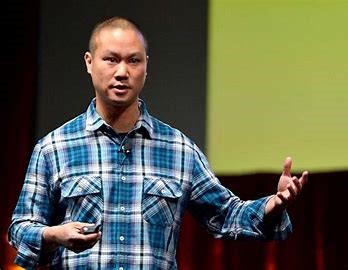
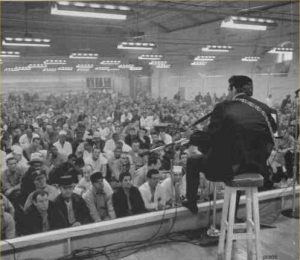
17 comments
Alejandro Rubio Chappell
This infographic did a great job of breaking down Tony Hsieh’s journey and leadership philosophy in a clear and engaging way. I liked how it emphasized his shift from traditional business models to a more employee-centered approach, especially with the introduction of holacracy. The visuals helped guide the story, and I appreciated how it highlighted both his successes and challenges realistically.
Natalia De La Garza
This infographic is fantastic! Thank you so much for your hard work I love how detailed and insightful it is. It really helps to explain the key points clearly and effectively. Great job!
Rhys Williams
I found the journey of Tony Hsieh’s transformation from the tech industry to visionary leadership at Zappos both captivating and inspiring. The quote, illustrating Hsieh’s pivotal moment of selling his first company to Microsoft and embarking on the ambitious journey to reshape organizational culture, sets the stage for his remarkable impact on the business world. Hsieh’s unwavering commitment to employee happiness and innovative introduction of holacracy not only propelled Zappos’ success but also revolutionized our understanding of modern workplace dynamics, leaving an enduring legacy in the landscape of contemporary workplaces.
Rhys Williams
I thoroughly enjoyed immersing myself in the narrative of Tony Hsieh’s journey from the tech industry to visionary leadership at Zappos. The quote, highlighting Hsieh’s pivotal moment of selling his first company to Microsoft and embarking on the transformation of Zappos, sets the stage for his remarkable impact on organizational culture. Hsieh’s unwavering commitment to employee happiness and introduction of holacracy not only revolutionized Zappos’ success but also reshaped our perception of modern workplace dynamics, leaving behind a lasting legacy in the business landscape.
Carlos Anthony Alonzo
Kudos on your research! Your study on Tony Hsieh’s story is both rigorous and insightful, providing valuable contributions to our understanding of workplace. The methodology is sound, and your findings are well-supported by evidence. I appreciate the clarity of your presentation and the thoughtfulness of your analysis. I’m curious how wages/salaries were distributed in this new organization and how that relates to the employee and customer satisfaction.
Lauren Sahadi
I really liked this story of leadership on Tony Hsieh. This is a really great article for a business major. It showed his bold decisions and how he set new standards for innovation in the workplace. His passing was sad, but like this story, he continues to inspire even after his death. This was a very interesting and captivating article. Really great job.
Fernando Milian
Tony Hsieh’s story is super inspiring! He started from the ground up and really transformed how businesses think about their workplace and culture. It’s amazing how he used his passion for customer and employee happiness to make Zappos a huge success. I think his idea of making a workplace fun and empowering for employees is something all companies should try to do. It’s sad that he passed away so young, but it’s clear that his legacy will definitely last. What he did with Zappos and in Las Vegas is something that will inspire many future entrepreneurs and business leaders.
Stela Naomi Sifuentes
He prioritized company culture and customer service, believing that happy employees lead to satisfied customers and ultimately, business success. Hsieh placed a strong emphasis on building a positive and inclusive company culture at Zappos. He believed in fostering a sense of community and belonging among employees, and he implemented initiatives such as the “Zappos Culture Book” and the “Core Values Interview” to ensure alignment with the company’s values.
LEE
I like this job. I read all and I wanted to know that how to improve my leader ship skills. I always wanted to be charismatic and get a leader ship in my real life but it is so hard for me to get one. After reading this article I found more confident and become more happy. Thank you for telling us this great story.
Sebastian Hernandez-Soihit
Hsieh’s commitment to customer satisfaction through employee happiness is truly inspiring. I would no have known the way in which holacracy revolutionized organizational culture, and the new standard for business practices. His approaches to everythignreally exemmmplify his innate leadership despite his untimely passing.Thank you for sharing this insightful and impactful narrative.